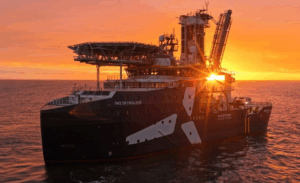Capesize spot rates “hesitant” despite 5% rise in demand, Bimco´s Analyst Filipe Gouveia says.
Analyst believes that spot rate increases remain hesitant mainly due to concerns over China’s fragile economic recovery.
The shipping association, Bimco, said that during the first five months of 2023, demand for Capesize ships increased 5% year on year and vessel supply was up only 3%.
In this week’s “Shipping Number of the Week” from Bimco, Shipping Analyst, Filipe Gouveia considers China’s fragile economic recovery might still be the largest obstacle to stronger Capesize rates. In March, economic activity strengthened, but bulk demand indicators have weakened since then.
The Chinese government is currently working on a stimulus package to further aid the real estate sector. “If the package is strong enough to drive construction activity, Capesize demand and rates could see some support.”
Another factor that could also be contributing to weaker Capesize rates is the competition from Panamax ships, in accordance with the analyst.
“The improved supply/demand balance has allowed rates to recover from the low levels observed between August 2022 and February 2023. However, over the past week spot rates have once again come under pressure,” said Gouveia.
Demand growth was supported by a 4% increase in average haul while cargo volumes increased only marginally. Average haul increased due to higher exports from Brazil and Guinea and higher volumes of long-haul Russian coal.
Supply rose due to a 2% y/y increase in the Capesize fleet and a 1% increase in fleet productivity. Congestion for Capesize ships diminished compared to a year ago, freeing approximately 2% of the fleet while sailing speeds fell on average 1%.
Analyst Filipe Gouveia also added that “the Baltic Exchange’s Capesize index fell 58% between its most recent peak on 10 May this year and its most recent low on 2 June. The rapid decline was driven by weaker rates for transatlantic voyages due to low import demand from Europe for coal and iron ore. Rates have since started to recover as ships reposition.”



